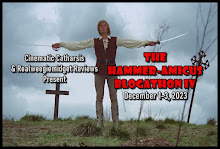Ever since I got my Kindle a little bit less than two years ago my reading and book buying habits have changed quite a bit.
Whereas previously I was a regular client with the local bookstores and often purchased normal paperbacks at normal prices, this has now nearly completely gone down the river. Unless I receive a book voucher, I generally don’t spend any money on bog standard paperbacks anymore.
I quickly learned that I can easily get the classics for free and when I want a current novel or non-fiction book I get them cheaply and often at a great discount in an eFormat.
I am also a great fan of classic pulp fiction, easily get bored with the cover design for most modern editions and regularly frequent the Second Hand book stores, again getting my regular reading fix from discounted second hand books.
On the other hand, however, I have over the last few years spent a crazy amount of money on some exclusive edition coffee table books that may cost an arm and a leg but that truly deserve a special place on my shelves.
Especially us Hammer Fans have over the years been able to reserve some of our shelf space for beautiful tomes on all aspects of Hammer.
Wayne Kinsey is one of the most prolific authors in this field and when his Hammer Films on Location failed to find a regular publisher he simply set up his own publishing house, Peveril Publishing.
Printed landscape in an oversized scrapbook format this is a beautiful accumulation of Cushing memorabilia and a celebration of the life and career of the Gentleman of Horror who would have turned 100 this year.
The material is published on a film-by-film basis with short introductions provided by co-author Tom Johnson. None other than George Lucas has provided the foreword; the afterword is by Janina Faye.
The heart and soul of this work, however, are a myriad of pictures accompanying each chapter and generously provided by his secretary Joyce Broughton or on loan from a range of collectors worldwide.
These range from often rare and previously unpublished private and on-set photos to theatre programs, snippets of newspaper publications and most importantly countless reproductions of Cushing’s own copiously annotated scripts and sketches for costume suggestions as well as cartoons and phonetic rhymes created for his beloved wife Helen and other friends and colleagues. More than any written word can do, these give a wonderful insight into the true nature of Cushing, the man, and his vast range of interests and talents. Yes, we of course also get a good idea of all those scarves he designed, his toy soldiers, dollhouses and watercolours. And if you ever wondered what his well-travelled passports looked like, then wonder no more.
The most amazing insight into his professionalism as an actor comes from noticing the extent of notes he prepared in advance of any film shot, regardless how big or small the production may have been. Even lesser works such as The Uncanny or Hitler's Son had his full attention. No wonder he was incapable of ever providing a bad performance.
Those coffee table publications stand and fall with the quality of their printing and the reproductions here are faultless. I had no issue deciphering any of the script pages or other written material. The binding also appears to be made to last. The landscape format is unusual but ultimately a good choice for the subject matter.
This book is exclusively available through Peveril. When ordering it is also possible to purchase an additional DVD-R with some of the pictures in the book as well as a few others that didn’t quite make the cut. That DVD-R is not really essential but a nice extra to have.
As long as Wayne and some of the other authors will continue with their sterling efforts in creating those visual master-pieces, my book shelves will find a welcome space for those. No fear of me ever wanting to have these in anything else but a physical copy.












































